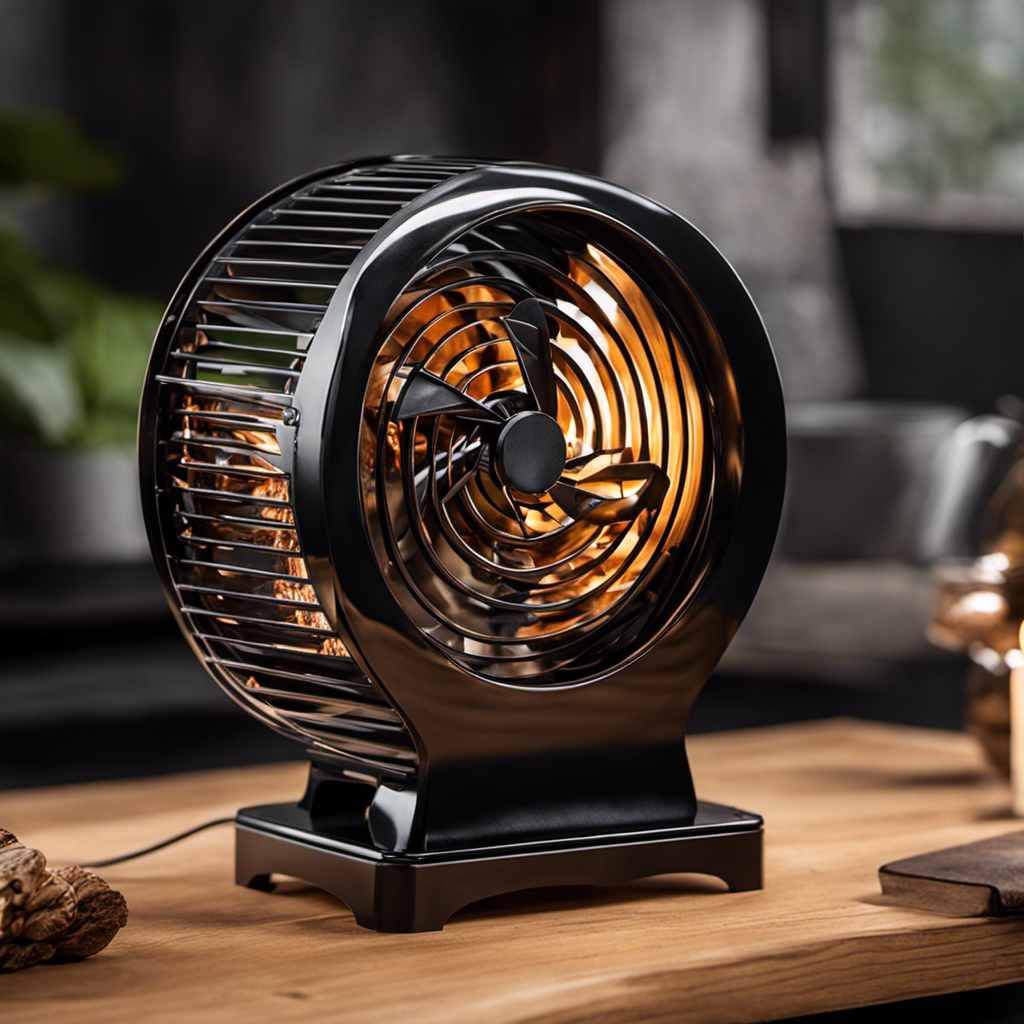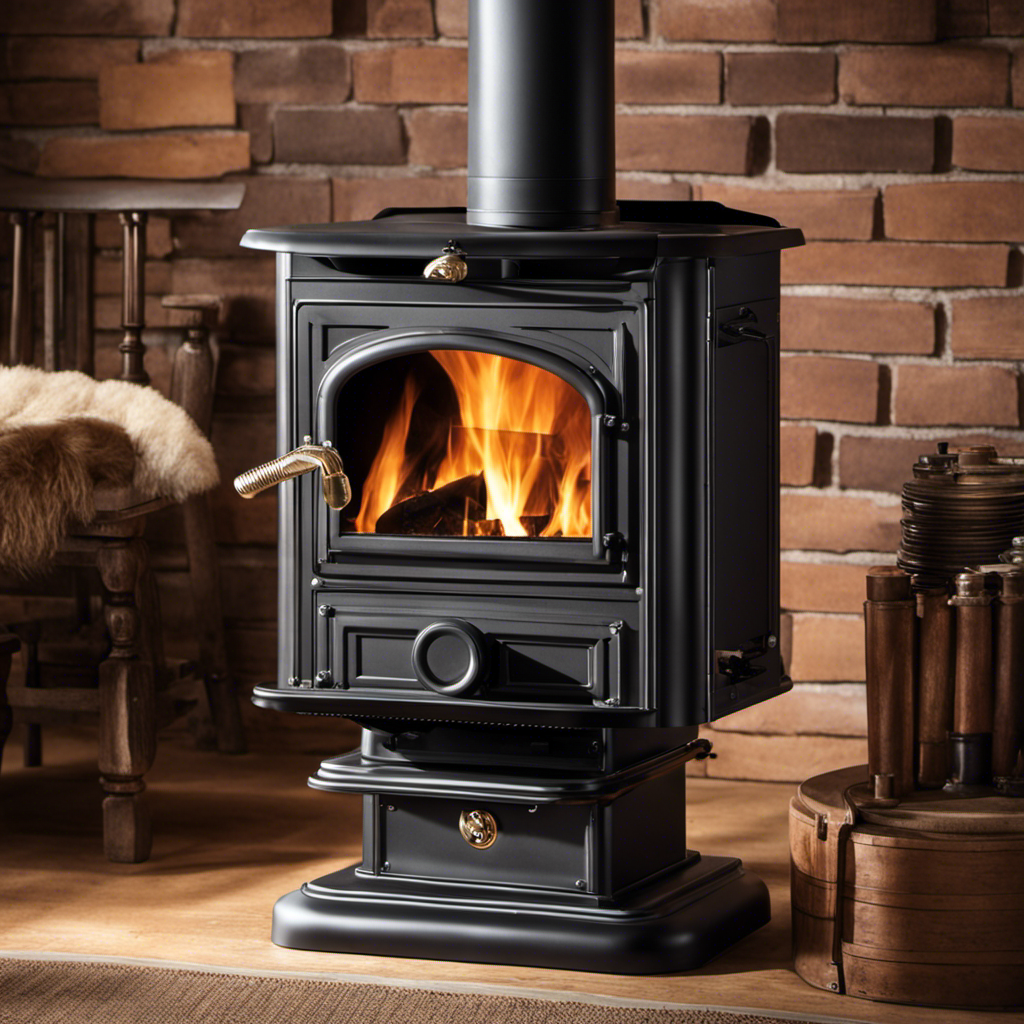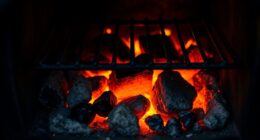As a homeowner, I’m well-acquainted with the warm, cozy feeling a wood stove in a fireplace brings. If you’re ready to take the step and install a wood stove in your fireplace, you’ve arrived at the right place.
In this step-by-step guide, I’ll walk you through the process of:
- Choosing the right wood stove
- Preparing your fireplace
- Installing the chimney and ventilation system
- Connecting and securing the wood stove
- Ensuring safety and proper maintenance.
Let’s get started!
Key Takeaways
- Consider the size, heating capacity, and fuel availability when choosing a wood stove.
- Thoroughly clean the fireplace and measure its dimensions before installation.
- Install the chimney and ventilation system properly, ensuring a proper seal and clearance from combustible materials.
- Regularly inspect, clean, and maintain the flue pipe, and ensure proper ventilation and safety measures are in place.
Choosing the Right Wood Stove
I think the most important factor when choosing a wood stove is its size and heating capacity. The size of the wood stove should be determined by the size of the area you want to heat.
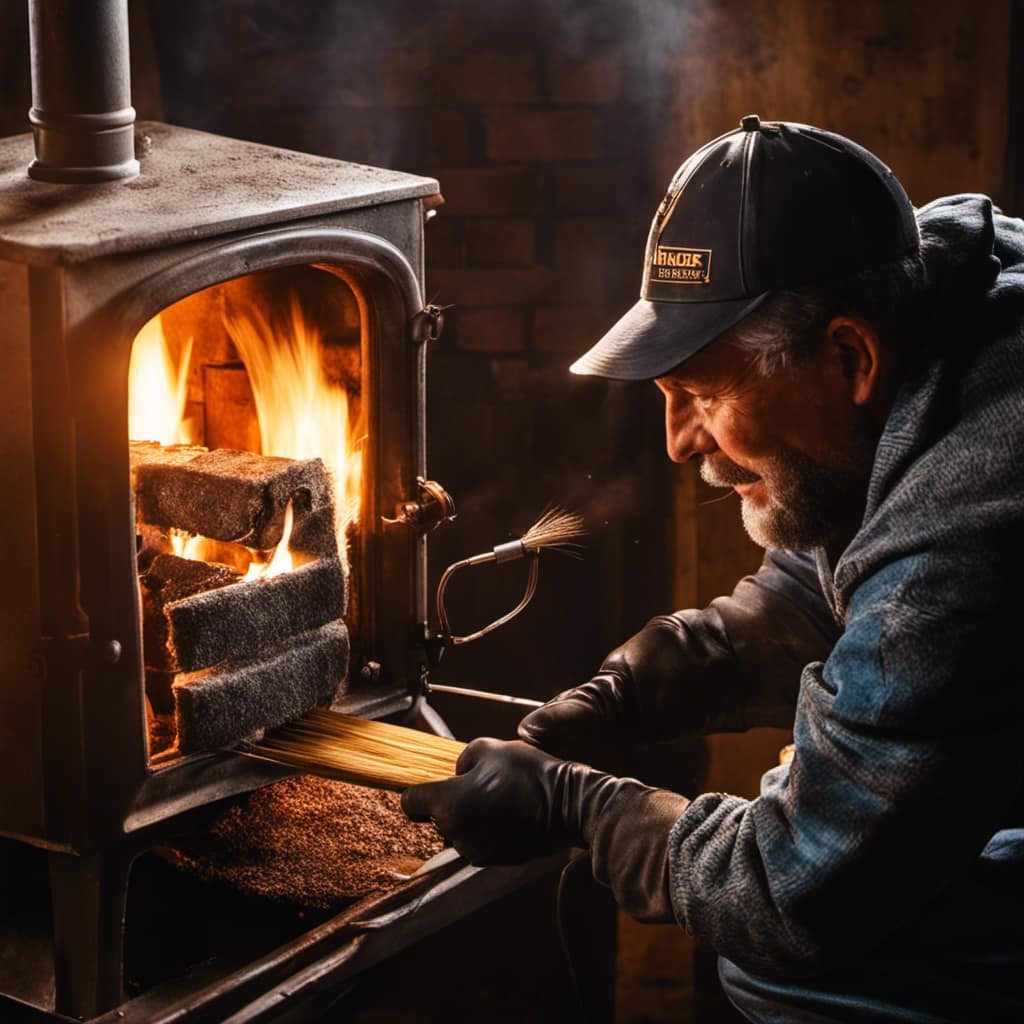
To calculate the heating capacity, you should consider the insulation in your home and the climate in your area.
It’s also important to consider the efficiency of the wood stove. Look for a stove that’s certified by the Environmental Protection Agency (EPA) and meets the current wood stove regulations. These regulations ensure that the stove burns wood efficiently and produces less smoke and pollutants.
Once you’ve chosen the right wood stove, you can move on to preparing the fireplace for installation.
Preparing the Fireplace for Installation
Before beginning, it’s important to ensure the fireplace is properly prepared for installation. Here are the steps to prepare the fireplace for the wood stove:

- Clean the fireplace thoroughly, removing any debris or ashes.
- Measure the dimensions of the fireplace opening to determine the size of the wood stove needed.
- Check if the fireplace has a chimney liner. If not, one will need to be installed to ensure proper ventilation.
- Inspect the fireplace for any cracks or damage that may need to be repaired before installation.
- Clear the area around the fireplace, removing any flammable materials or furniture that may be too close.
Now that the fireplace is prepared, we can move on to installing the chimney and ventilation system.
Installing the Chimney and Ventilation System
Now that the fireplace is properly prepared, it’s time to start setting up the chimney and ventilation system.
The first step is to install the flue pipe, which will carry the smoke and gases out of the house. Begin by measuring the distance from the top of the fireplace to the ceiling. Cut the flue pipe to the appropriate length using a reciprocating saw.
Attach one end of the pipe to the fireplace’s flue collar using screws and a screwdriver. Next, secure the other end of the pipe to the chimney opening using a pipe clamp. To ensure a proper seal, apply high-temperature silicone caulk around the connection.

Connecting and Securing the Wood Stove
To ensure a secure connection, I’ll carefully attach the flue pipe to the chimney opening using a pipe clamp. This step is crucial in ensuring the proper functioning and safety of the wood stove installation.
Here is a step-by-step guide on how to connect and secure the wood stove:
- Measure the distance between the flue collar on the wood stove and the chimney opening.
- Cut the flue pipe to the appropriate length, ensuring that there’s enough clearance between the pipe and any combustible materials.
- Slide one end of the flue pipe onto the flue collar of the wood stove.
- Attach the other end of the flue pipe to the chimney opening, using a pipe clamp to secure it tightly.
- Install securing brackets along the length of the flue pipe to provide additional support and stability.
By following these steps, you can ensure a secure connection between the wood stove and the chimney. This will help prevent any potential hazards and ensure the efficiency of your wood stove.
Now, let’s move on to the next section, which focuses on ensuring safety and proper maintenance.
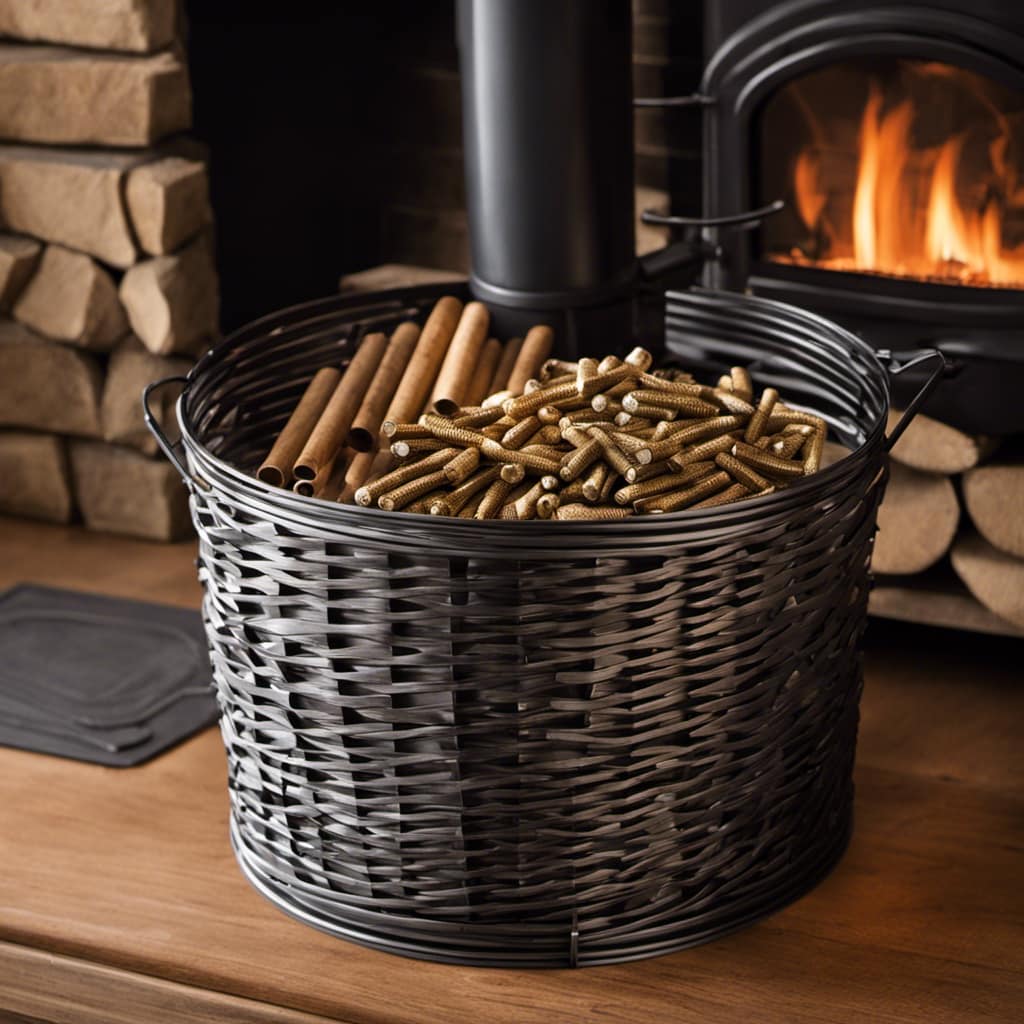
Is it necessary to install a wood stove in a fireplace before replacing the fire brick?
Yes, it is necessary to install a wood stove in a fireplace before replacing the fire brick. The wood stove will provide the necessary heat and insulation for the fire brick to function properly. Without the wood stove, the fire brick may not perform as effectively.
Ensuring Safety and Proper Maintenance
I regularly inspect and clean the flue pipe to ensure the safety and proper maintenance of my wood stove installation. Regular chimney cleaning is of utmost importance to prevent potential fire hazards and maintain the efficiency of the wood stove. Here are some common mistakes to avoid during wood stove installation:
Neglecting chimney cleaning: Over time, creosote and debris can accumulate in the flue pipe, increasing the risk of chimney fires. Regular cleaning helps remove these deposits and ensures proper airflow.
Improper installation of the flue pipe: It’s crucial to follow manufacturer’s guidelines for installing the flue pipe. This includes using the correct size and materials, securing it properly, and ensuring there are no gaps or leaks.
Lack of proper ventilation: Adequate ventilation is essential for the wood stove to function efficiently and safely. Make sure to provide enough fresh air intake and install a carbon monoxide detector as an added safety measure.

Frequently Asked Questions
How Much Does It Cost to Install a Wood Stove in a Fireplace?
Installing a wood stove in a fireplace involves several cost factors, including the price of the stove, chimney liner, and installation labor. The installation process includes preparing the fireplace, installing the chimney liner, and connecting the stove to the flue.
Can a Wood Stove Be Installed in a Fireplace Without a Chimney?
Yes, a wood stove can be installed in a fireplace without a chimney. Alternative installation methods, such as using a venting system, can be used. The benefits of using a wood stove in a fireplace include increased heat efficiency and reduced energy costs.
What Are the Potential Dangers of Installing a Wood Stove in a Fireplace?
The potential dangers of installing a wood stove in a fireplace include fire safety risks and inadequate ventilation. It is important to follow proper installation guidelines to ensure the safe operation of the stove.
Can a Wood Stove Be Connected to an Existing Chimney?
Yes, a wood stove can be connected to an existing chimney. However, it is important to ensure chimney compatibility and proper installation to avoid potential dangers and ensure efficient operation.
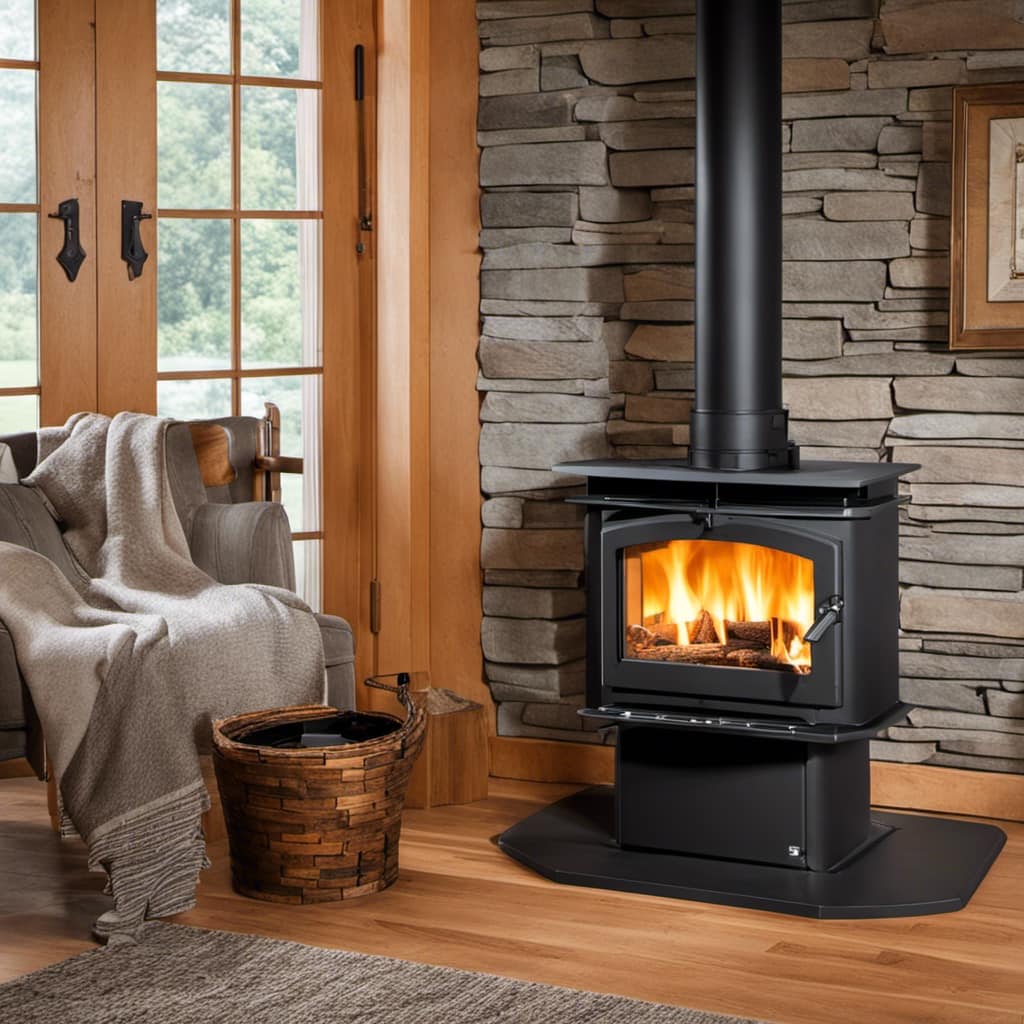
How Often Should a Wood Stove Be Cleaned and Maintained?
To clean a wood stove properly, start by letting it cool completely. Remove ashes and debris with a shovel and brush. Clean the glass with a stove glass cleaner. Regular maintenance includes checking gaskets, cleaning the chimney, and inspecting for any damage.
Conclusion
In conclusion, installing a wood stove in your fireplace is a detailed process that requires careful planning and execution.
By choosing the right wood stove, preparing the fireplace, installing the chimney and ventilation system, and connecting and securing the wood stove, you can ensure a safe and efficient heating solution for your home.
Remember to always prioritize safety and proper maintenance to enjoy the warmth and ambiance of a wood stove in your fireplace.
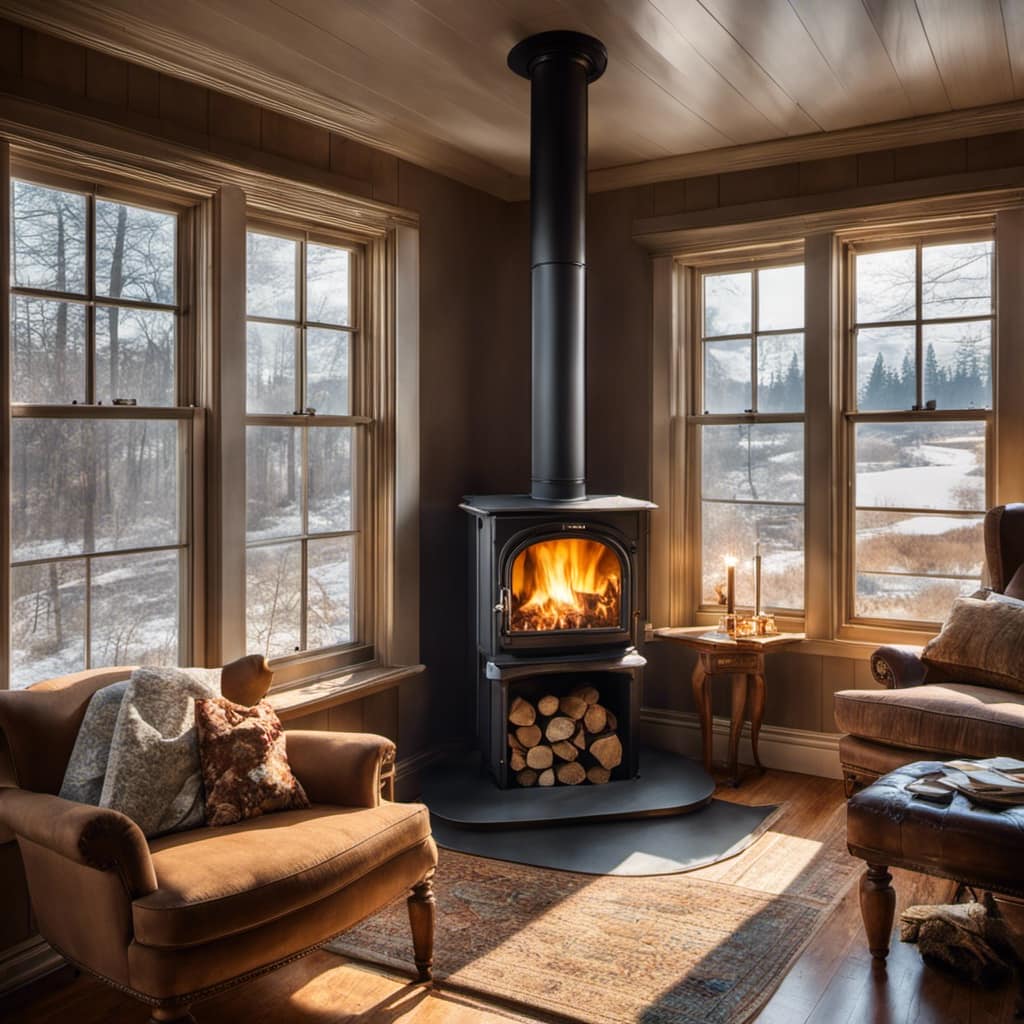
Growing up surrounded by the vast beauty of nature, Sierra was always drawn to the call of the wild. While others sought the comfort of the familiar, she ventured out, embracing the unpredictable and finding stories in the heartbeat of nature.
At the epicenter of every remarkable venture lies a dynamic team—a fusion of diverse talents, visions, and passions. The essence of Best Small Wood Stoves is crafted and refined by such a trio: Sierra, Logan, and Terra. Their collective expertise has transformed the platform into a leading authority on small wood stoves, radiating warmth and knowledge in equal measure.






